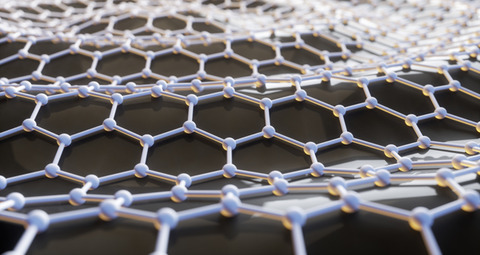Have you ever heard of the word graphene? It is a single atomic layer of graphite which is an allotrope of carbon. In this structure, carbon atoms are tightly arranged into a honeycomb lattice.
In 2004, Andre Geim and Kostya Novoselv from University of Manchester were able to separate graphene by sticking an adhesive tape on a piece of graphite. With this tremendous discovery of graphene, the pair got the opportunity to win the Nobel Prize in physics in the year 2010.
Graphene shows amazing collection of properties; it is the world’s strongest but thinnest material which is harder than diamond, amazingly flexible, conductive than copper, extremely dense and completely transparent. Because of these mechanical and electronic properties, businesses and entrepreneurs are paying special attention on this material. In the near future, we will be able to experience miraculous products manufactured from this super material.
A substitute for oil
The six energy giants (Exxon Mobil (US), Gazprom (Russia), Royal Dutch Shell (The Netherlands), British Petroliam (UK) and Petro China (China)) were among the top ten wealthiest companies in the world in 2006.[6] None of the names were there in the top ten in 2019 list, thus all are replaced by new digital companies from the United States and China.[7] Digital companies, whose preliminary assets are data and digital intellectual property, have earned massive wealth surpassing rich oil companies in the last decade.
According to the forecast of “The Economist” magazine, rise of electric vehicles over the declination of internal combustion engines in 2025 could arise a new question, whether the new oil barrel is graphene or data? However, this new electric vehicle era will introduce new wealthy companies and countries to the world.
Improved Batteries
These batteries have graphene sheets in anode with millions of nano-holes, which allow lithium ions to pass through the holes instead of travelling over the graphene layer. In 2011, engineers discovered that the graphene anodes are more powerful than graphite anodes, batteries lasted longer and charged ten times faster. Those properties are identified essential in boosting the efficiency of electrical vehicles.
In 2013, ultrathin flexible anode was designed for lithium-ion batteries using graphene laced with boron; this arrangement resulted in faster charging. The same researchers revealed that graphene mixed with vanadium oxide has high performances; slow battery drain and fast recharge in 20 seconds. Currently researches are carried to improve grid-scale batteries and converters. High capacity electrical storage batteries are developed to settle the difference between electricity generation and consumption.
Photovoltaic Cells
A research team at MIT discovered the possibility of enhancing the power conversion efficiency of photovoltaic cells by inserting graphene within the cells. These graphene cells are less expensive, lightweight and flexible. It also gives chemical robustness and mechanical strength to the cell.
Graphite in Sri Lanka
Sri Lanka’s graphite is considered as one of the purest form of graphite on earth with more than 95% purity. Sri Lanka has been exporting purest graphite in its raw form for over a century.
Among three nationalized mines (at Bogala, Kahatagaha and Kolongaha) of Sri Lanka, 90% ownership of Bogala has been bought by a German company in 2005. They export raw graphite at a rate less than $3 per kg and sell value added graphite at an approximated rate of $2000 per kg in Germany. Recently, government is considering to approve a project associating Kahatagaha graphite mine, to develop value added graphite based products. This might be a great decision to achieve the fortune through this wonderful material-graphite, in electric car powering era.
M.M.L.K Karunaratne
Department of Electrical Engineering
University of Moratuwa
[7]
https://ceoworld.biz/2019/06/28/the-top-100-best-performing-companies-in-the-world-2019/
Department of Electrical Engineering
University of Moratuwa
References



No comments:
Post a Comment